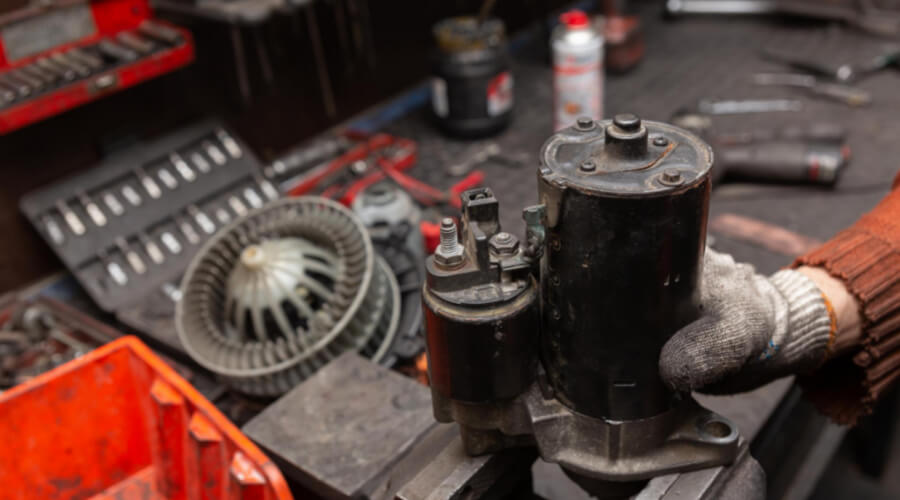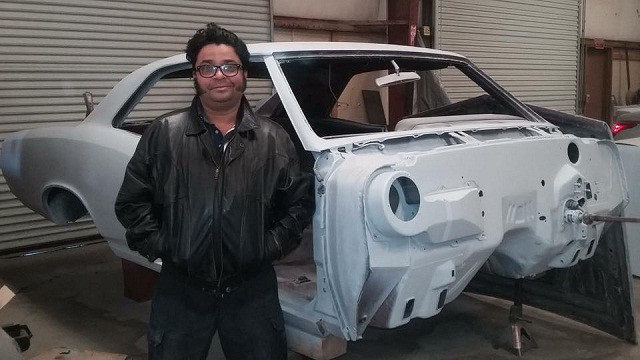Last Updated on December 25, 2022 by Leepu Da Maxim
Well, it might take as little as 20 minutes to 6 hours to replace a starter at Toyota dealerships. The exact time to replace a starter at Toyota dealerships depends on quite a few things like the availability of the parts, vehicle model, transmission type, the complexity of the repair as well as the workload of the dealership’s service department.
Key Takeaways
- If your vehicle has a front-wheel-drive transverse powertrain then it will take less time to replace the starter
- The time requires to change the starter also largely depends on the size of the engine, the larger the engine the more time will require to change the starter
- The powertrain layout also impacts how long it will take to replace the starter, the transverse layout usually takes less time compared to the longitudinal layout
- If you hear unusual noises on starting like grinding then it is a signal that your starter requires a replacement
Starter Replacement In Various Toyota Models

The time to replace the starter in different Toyota models varies depending on the engine’s size. Two Toyota engines with the same size and layout will probably take the same time for the starter to be replaced. Let’s look at the different criteria and determine the time to replace the starter for various Toyota engines.
1. The Size Of The Engine
For engine size, it goes without saying that the larger the engine, the longer the starter replacement procedure. This is because large engines often have other components that need to be removed before you can access the starter to remove it. When removed, some of these components may need the replacement of seals, gaskets, or even recalibration. All these extra steps take up more time and effort and will add up to the cost of replacing the starter.
It may take hours to replace the starter on large Toyota engines and put everything back together. Engines with more significant displacement have more components and take longer to dismantle or assemble.
2. The Engine Layout On The Engine Bay
The powertrain layout also impacts how long it will take to replace the starter. The powertrain layout (transmission, engine, and drive) can be transverse or longitudinal.
The transverse layout means the engine is fitted from left to right or widthways in the engine bay. This layout is mainly found on the front-wheel drive or all-wheel drive vehicles. It is the easiest to change unless the engine is abnormally large. The starter motor on these models is located at the front of the engine, and you won’t have to work under the car. In a transverse layout, you will need to remove the exhaust, half shaft, and pipework components for enormous engines.
The longitudinal layout means the engine is fitted lengthwise or front to back. This layout is mainly associated with rear-wheel drive and 4X4 vehicles. In these layouts, the starter replacement process is more challenging and takes more time, but you have more room to work with and lesser components derailing you.
What Does The Starter Replacement Process Entail?
The starter motor replacement process varies depending on the vehicle model, engine size, and layout. However, some steps are standard for all starter motor replacements. Below are the steps a mechanic follows in the starter motor replacement:
1. They fit the scanning tool and run simple diagnostic tests to ensure that the problem is in the starter and not any other electrical components
2. Next, they remove the battery’s negative terminal to disconnect the battery before any work commences
3. The vehicle is then jacked and secured on axle stands for easier access
4. After that, they remove the wiring harness from the rear of the starter and disconnect all wiring to the starter
5. Later, they Remove starter bolts from the transmission case or engine block and remove any components that may need to be removed or lowered before accessing the starter.
6. After removing the old starter, a new one is installed, and the mounting bolts are tightened according to OEM torque specifications. The electrical connections are cleaned and re-attached to the starter then it is tested to confirm if it is functioning properly
This process takes 2 hours on average, but when the starter is hard to access, it can take between 4-6 hours because of the time taken to remove components and return them. If your mechanic notices other issues, such as burnt-out electrical components, the repair will take longer. If you are scheduled for starter repair, it is advisable to slot a full day at the garage. Plans other means of commuting to avoid disappointment if the process takes too long.
How To Know When You Need A Starter Replacement
Starters are durable, but sometimes, they may fail or malfunction. What signs do you look out for to determine that your starter is failing? Below are some of the most common ones:
1. Starter operating intermittently– if you notice that your starter works sometimes, but other times nothing happens when you turn the key, it is time for a replacement. This often happens when your starter has developed a bad spot on the armature, causing it to work irregularly
2. Unusual noises on starting– if you hear any unusual noise such as grinding while starting the engine. Have the mechanic check your car as this may be a sign of internal starter failure
3. Starter starts too slowly– if you notice that the starter doesn’t start as rapidly as it’s supposed to, it’s time for a replacement. The starter turns slowly when some mechanical and electrical faults cause the starter to draw more current than the battery can supply.
4. Complete motor failure– sometimes, the starter’s first sign of malfunctioning starter will be the failure to function when you turn the key. If this happens, you have no option other than to get a replacement.
Can You Drive When The Starter Is Malfunctioning?
The starter’s work is to turn the engine on; if the car starts and is running, you can drive with no issues. However, if the starter is malfunctioning, you may turn the engine off and refuse to restart the engine, thus leaving you stranded. If you suspect that your starter is malfunctioning, it is best to consult a professional to have it repaired and avoid being stranded.
How Much Does A Car Starter Repair Cost?
The cost of starter replacement depends on the model of the car, whether you buy OEM or aftermarket parts, and the auto repair shop you choose. A brand-new starter can cost between $80-$350, and the labor costs from a qualified mechanic range between $150-$1,100. The total cost of replacing a faulty starter could range between $250-$1500. If you identify starter problems early enough, this cost will be significantly lower.
Can A Starter Motor Be Rebuilt?
Yes, a professional auto-electric mechanic can rebuild the starter motor. The cost of rebuilding the starter exclusive of installation ranges between $65 to $150 depending on the auto shop you go to
How Long Does The Starter Motor Last?
A starter motor lasts for around 100,000- 150,000 miles, and in most vehicles, it will last for the car’s lifetime. However, in some vehicles, the starter may fail prematurely.
Wrapping Up
Your car’s starter helps to start the vehicle for the engine to run. You risk getting stranded when the vehicle refuses to start if it fails. If your starter is malfunctioning, it is best to have it replaced and avoid the risk of your car failing to start. The cost and time taken for a starter replacement vary depending on the vehicle model. It can take approximately two hours if there’s no other complication. However, it is advisable to schedule a whole day for starter replacement as you might never know how long it will take. On the day you plan to have your starter replaced, find alternative means of transport.
Reference:
https://www.justanswer.com/toyota/6i2hc-cost-replace-starter-toyota.html
https://www.yourmechanic.com/estimates/toyota/camry/starter-replacement

Hi, I’m Leepu Da Maxim , a dedicated car enthusiast with over 10 years of experience in this field, and I’m thrilled to share my passion and expertise with fellow car enthusiasts like you. My journey began in my hometown West Jordan, Utah, where my fascination with the mechanics and design of cars sparked at a young age. Over the years, this passion has evolved into a commitment to providing accurate, insightful, and engaging information about all things automotive through CarsAmazing .

